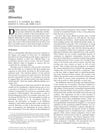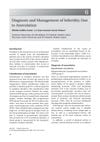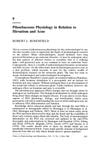Secondary Amenorrhea With Absent Axillary Hair
March 2023
in “
European journal of internal medicine
”
secondary amenorrhoea axillary hair pubic hair hypoprolactinaemia secondary hypocortisolism secondary hypothyroidism central hypogonadism pituitary necrosis Sheehan's syndrome corticosteroids thyroid hormone replacement oestrogen hormone replacement progesterone hormone replacement absent axillary hair absent pubic hair low prolactin low cortisol low thyroid hormone low sex hormones pituitary gland damage SS steroids thyroid medication estrogen therapy progesterone therapy

TLDR The patient's long-term symptoms were due to Sheehan's syndrome, which improved with hormone therapy.
A 39-year-old female patient presented with symptoms such as fatigue, muscle pain, and shortness of breath, along with lack of menses for 19 years and absence of axillary and pubic hair. Biochemical evaluation revealed hypoprolactinaemia, secondary hypocortisolism, secondary hypothyroidism, and central hypogonadism. An MRI showed a low volume pituitary with an empty sella. These clinical and biochemical findings led to the diagnosis of Sheehan's syndrome (SS), a condition that occurs after postpartum haemorrhage/hypovolemia resulting in pituitary necrosis and manifests many years later. The patient was treated with corticosteroids, thyroid, oestrogen, and progesterone hormone replacement, showing significant improvement within weeks. The case highlights the importance of awareness of SS among physicians due to its non-specific symptoms and long diagnostic delay, as well as the utility of postpartum menstrual history and absence of axillary and pubic hair in aiding diagnosis.





